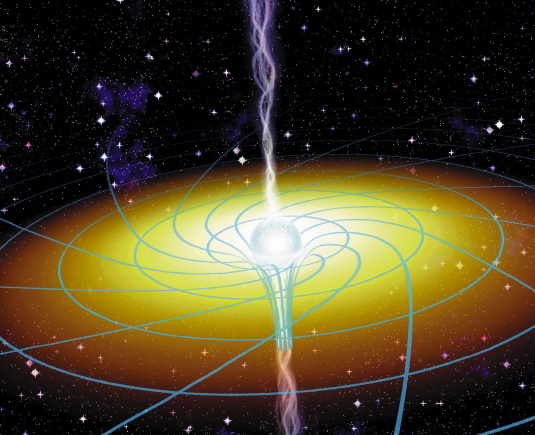Because I’ve been asked a lot about this lately, I thought I’d also share my own take on this calculation in my blog.
Gravitoelectromagnetism (or gravitomagnetism, even gravimagnetism) is the name given to a formalism that shows how weak gravitational fields can be viewed as analogous to electromagnetic fields and how, in particular, the motion of a test particle is governed by equations that are similar to the equations of the electromagnetic Lorentz-force, with gravitational equivalents of the electric and magnetic vector potentials.
Bottom line: no, gravitoelectromagnetism does not explain the anomalous rotation curves of spiral galaxies. The effect is several orders of magnitude too small. Nor is the concept saved by the realization that spacetime is not asymptotically flat, so the boundary conditions must change. That effect, too, is much too small, at least five orders of magnitude too small in fact to be noticeable.
To sketch the key details, the radial acceleration on a test particle due to gravitoelectromagnetism in circular orbit around a spinning body is given roughly by
$$a=-\frac{4G}{c^2}\frac{Jv}{r^3},$$
where \(r\) is the orbital speed of the test particle. When we plug in the numbers for the solar system and the Milky Way, \(r\sim 8~{\rm kpc}\) and \(J\sim 10^{67}~{\rm J}\cdot{\rm s}\), we get
$$a\sim 4\times 10^{-16}~{\rm m}{\rm s}^2.$$
This is roughly 400,000 times smaller than the centrifugal acceleration of the solar system in its orbit around the Milky Way, which is \(\sim 1.6\times 10^{-10}~{\rm m}/{\rm s}^2.\)
Taking into account that our universe is not flat, i.e., deviations from the flat spacetime metric approach unity at the comoving distance of \(\sim 15~{\rm Gpc},\) only introduces a similarly small contribution on the scale of a galaxy, of \({\cal O}(10^{-6})\) at \(\sim 15~{\rm kpc}.\)
A more detailed version of this calculation is available on my Web site.
